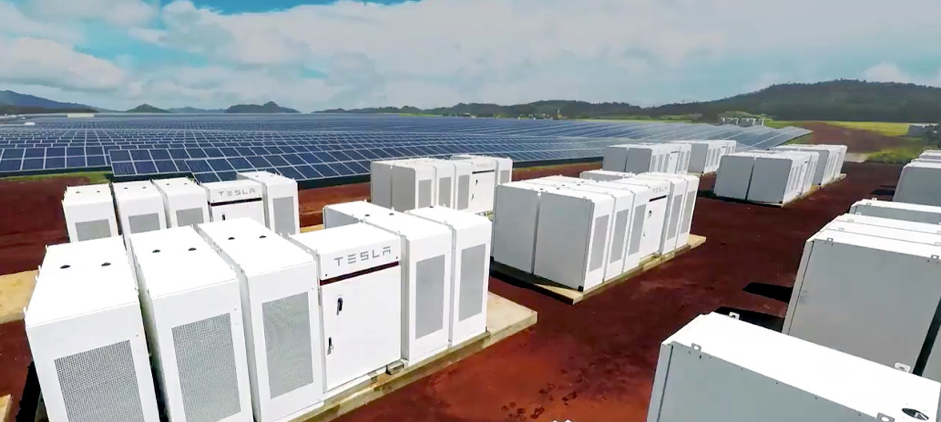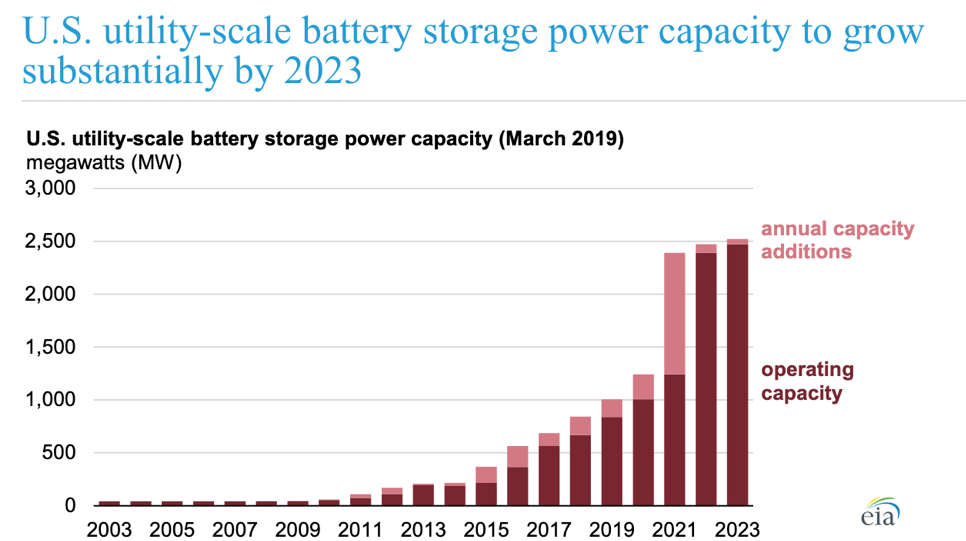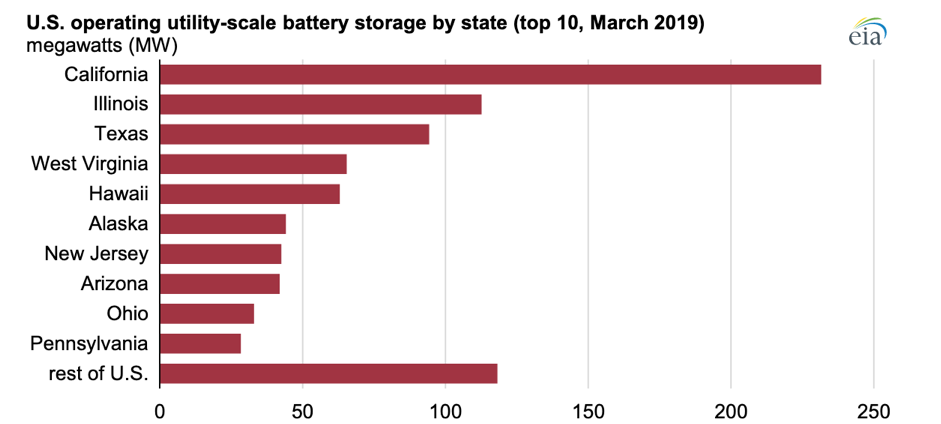By Tim Sylvia
View the original article here.
A new report by the Energy Information Administration projects U.S. installed battery storage capacity will reach 2.5 GW by 2023. Florida and New York are set to pave the way as massive projects in each state will account for almost half the coming capacity.
Symbiosis is one of life’s most beautiful phenomena. Certain things just work perfectly together and the energy revolution is no different, as renewable energy resources and battery storage go together like peas in a pod.
However, the United States has an operating battery storage capacity of only 899 MW to date. And while that figure is expected to reach 1 GW this year that would still only represent 1/67th of the nation’s cumulative solar generation capacity, and an even smaller percentage of the overall renewables capacity.
That could all be about to change dramatically though, as the U.S. Energy Information Administration(EIA) has released a report predicting battery storage capacity will almost treble by 2023, to 2.5 GW.
The projections were made based on proposed utility scale battery storage projects scheduled for initial commercial operation within five years. The EIA tracks data with its Preliminary Monthly Electric Generator Inventory survey, which updates the status of projects scheduled to come online within 12 months.
As drastic as a prediction of 2.5 GW appears, there is a precedent. Between late 2014 and March, installed battery storage capacity rose more than four times over, from 214 to 889 MW.
A look at the states that brought the U.S. to its current storage reality offers surprising results. Leading the way was California, unsurprisingly. However, of the six states known to pv magazine to have energy storage mandates, California is the only one in the top 10 for installed capacity. The others: Arizona, Nevada, New York, Massachusetts and Oregon; each have less than 50 MW of installed battery storage capacity.
Texas, Illinois and Hawaii are relatively unsurprising storage pioneers as all three states have strong solar industries and Hawaii especially has been pushing battery storage deployment. Right away, however, the names that stand out on the list are West Virginia, Pennsylvania and Ohio. None of those is known as a solar pioneer; they have just under 650 MW of generation capacity installed between them. Special recognition goes to West Virginia on that score, with its 8.5 MW.
So what’s with all the storage? Independent of renewables West Virginia, Pennsylvania and Ohio – plus New Jersey, the seventh state on the list – are all members of the PJM Interconnection. PJM was the first large market for battery storage, and uses the technology for frequency regulation.
That list is likely to look different by 2023, however. Of the 1,623 MW expected to come online by 2024, 725 MW will come courtesy of two projects – both in states outside the current top 10.
Two mammoth projects
The first of those is Florida Power and Light’s (FPL) planned battery system for its Manatee Solar Energy Center in Parrish. The battery is set to clock in at 409 MW, which would make it the largest solar powered battery system in the world.
In that project’s shadow, but nevertheless considerable is the Helix Ravenswood facility, planned in Queens, New York. Almost more impressive than the project’s anticipated 316 MW of capacity is the idea of having a storage project of such magnitude in NYC.
FPL’s Manatee battery is anticipated to begin commercial operation in 2021, as is the first stage of Helix Ravenswood. That initial phase in New York will represent 129 MW of capacity, with the remaining 187 MW following via a 98 MW second phase and 89 MW final stage. The anticipated commercial operation dates of those expansions have not yet been announced.
We have seen the future and there are batteries, lots of them, demonstrating symbiosis extends beyond the natural world.



